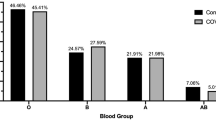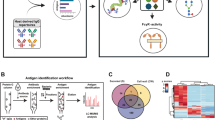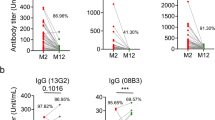Abstract
MANY workers have shown similarities between blood group substances and a variety of bacterial and non-bacterial antigens. Illchmann-Christ and Nagel1 found that anti-A antibody was removed from B and O sera by Staphylococci and reasoned that Staphylococci possessed an A-like receptor. This suggests that persons of blood group A may have an increased susceptibility to staphylococcal infection due to an inability to elaborate an antibody which may cross-react with their own red blood cells.
This is a preview of subscription content, access via your institution
Access options
Subscribe to this journal
Receive 51 print issues and online access
$199.00 per year
only $3.90 per issue
Buy this article
- Purchase on SpringerLink
- Instant access to full article PDF
Prices may be subject to local taxes which are calculated during checkout
Similar content being viewed by others
References
Illchmann-Christ, A., and Nagel, V., Z. Immunol. Forsch., 111, 307 (1954).
Anderson, K. F., Coulter, J. R., and Keynes, D. Ruth, J. Hyg. (Camb.), 59, 15 (1961).
Author information
Authors and Affiliations
Rights and permissions
About this article
Cite this article
COULTER, J. Staphylococcal Infection and Blood Groups. Nature 195, 301 (1962). https://doi.org/10.1038/195301b0
Issue date:
DOI: https://doi.org/10.1038/195301b0
This article is cited by
-
Acute haematogenous osteomyelitis and ABO blood groups and secretor status
Archives of Orthopaedic and Traumatic Surgery (1985)
-
Untersuchungen �ber die Verteilung der ABO-Blutgruppen bei verschiedenen Erkrankungen im S�uglingsalter
Human Genetics (1968)



